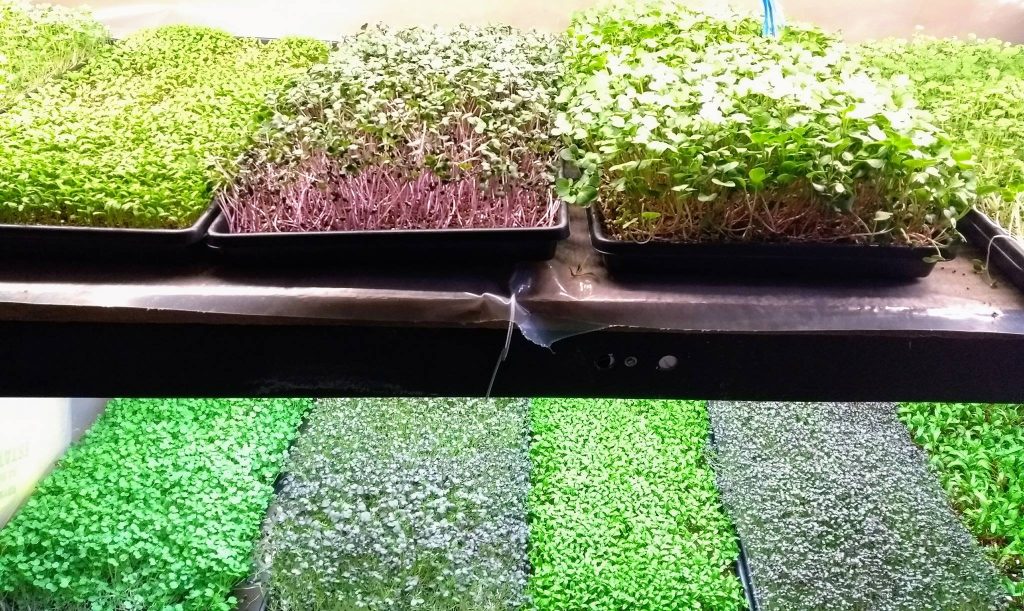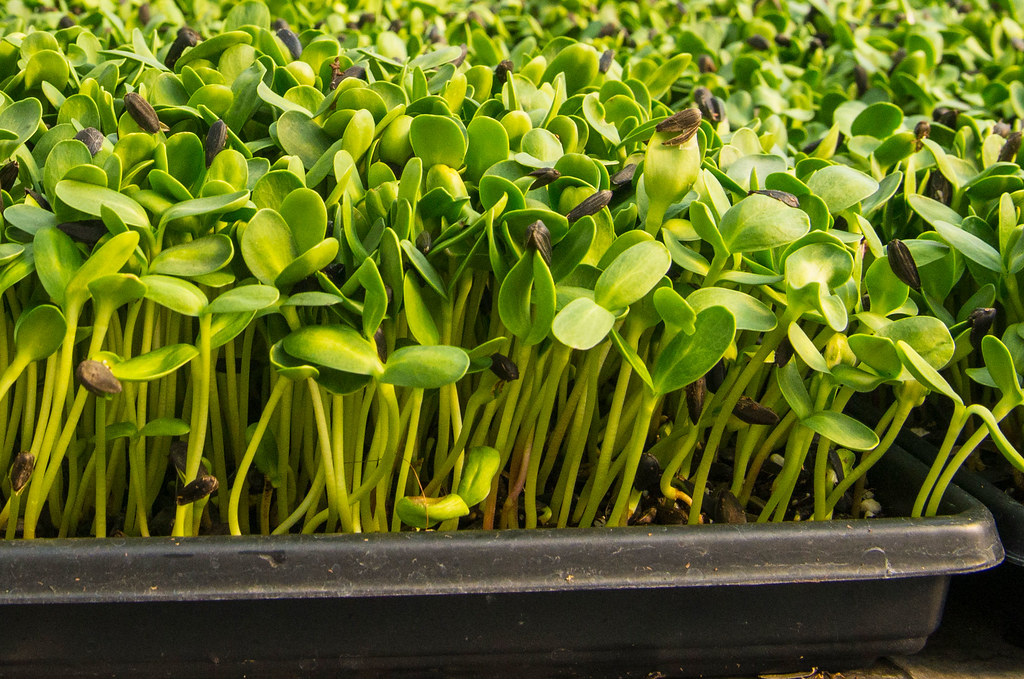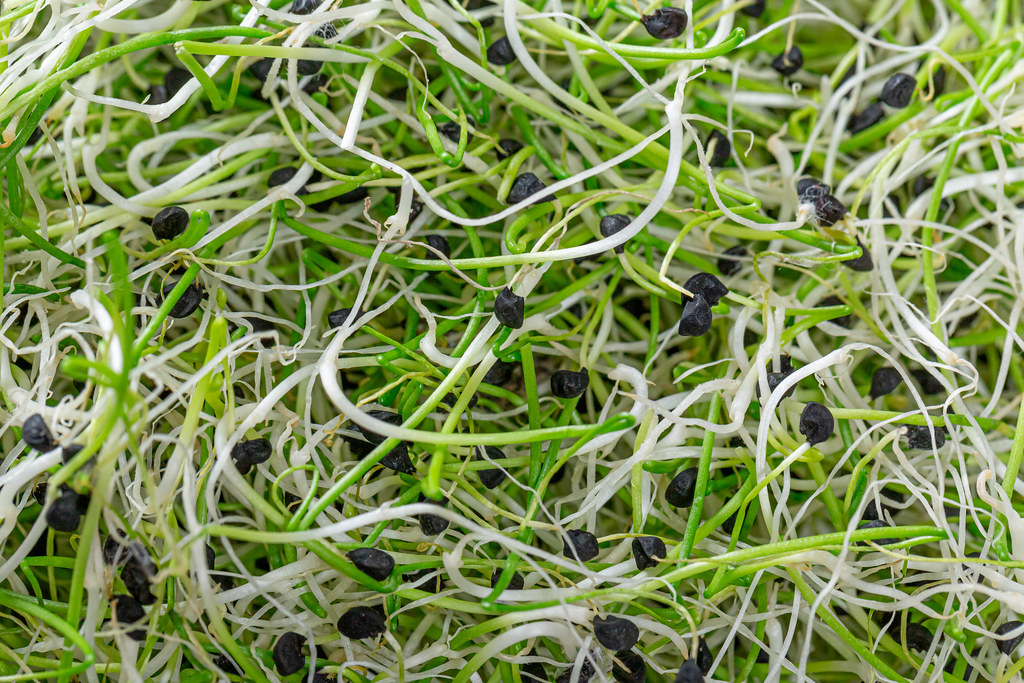Microgreens refer to tender, edible, juvenile, or young vegetable greens, which farmers harvest after the true leaves pop up or cotyledonary leaves develop. They are a few potential functional foods for humans based on their rich nutritional values. Moreover, you may substitute microgreens for sprouts to get the health benefits of microgreens without any compromise on your taste and flavor.
Nutritional Values of Microgreens
One can understand the health benefits of microgreens based on their nutritional values. For this, we should say that microgreens are available as packed with many essential nutrients. A few common nutritional contents include the following-
Rich in Iron and Other Components
The nutritional content of microgreens usually depends on their types. However, many variants tend to be rich in iron, potassium, copper, magnesium, and zinc.

Excellent Source of Compounds
Microgreens are excellent sources of antioxidants and other beneficial plant-based compounds.
Concentrated Nutrient is Present
Microgreens have concentrated nutrient content. Accordingly, such leaves have relatively high minerals, vitamins, and antioxidant levels as compared to the ones present in mature greens.
Anti-cancer properties
Chickpeas, broccoli, buckwheat, mustard, flax, and rutabaga are a few microgreens that display anti-cancer properties.
Antioxidant Anti-inflammatory and Antimicrobial Properties
The carotenoids, vitamin C, and isothiocyanate content of microgreens will benefit you as antioxidants and anti-proliferative components. Other than that, kale and kohlrabi microgreens have bio-accessibility associated with glucosinolate, polyphenols, and bioactive compounds. Hence, they exert anti-diabetic, anti-carcinogenic, antimicrobial, and anti-inflammatory properties.
Other Facts on Nutrition Value of Microgreens
- Microgreens have nine times higher nutrient levels as compared to the ones present in mature greens.
- Unlike matured greens, micro ones have varieties of polyphenols with antioxidants.
- Even though antioxidant levels and vitamin percentages in microgreens vary a lot, their levels may increase to a maximum of 40 times than the ones recorded for mature leaves.

Health Benefits of Microgreens
Based on the nutrition values of microgreens, healthcare experts consider them superfoods or functional foods. They contain antioxidants, anti-inflammatory properties, anti-cancer properties, antimicrobial properties, and anti-diabetic properties. Accordingly, a few common health benefits of microgreens are-
Help Fight Cancer
Cancerous death and other related complications have recently increased in almost every region of the world. Luckily, cancer patients may fight their condition with regular consumption of broccoli microgreens. Research studies have shown that broccoli microgreens contain sulforaphane compound, which has the potential of targeting cancer stem cells.
Act as Immunity Boosters
Anti-inflammatory properties present in microgreens help to boost the immune system in humans. Moreover, analysis of the health benefits of microgreens showed that they have vital nutrients, which humans in need in their daily life.
Control Diabetes or Blood Glucose Levels
Research studies have revealed that microgreens benefit a lot to control blood sugar and manage weight. Fenugreek microgreens compress the enzyme activity, which produces glucose and manages blood glucose levels.
Cleanse Your Digestive System
Radish and other similar categories of microgreens are excellent sources of vitamin C. Hence, such antioxidants may cleanse your digestive system. Furthermore, a few microgreens have a high content of prebiotic fiber to nourish many probiotic-friendly organisms in the gut. The prebiotic fiber also stimulates bacterial growth in one’s intestine to promote overall health. A few similar types of microgreens may treat the common cold and sore throat.
Boost Your Vision Health
Do you often squint your eyes at your mobile or laptop screen? You have to increase your intake of microgreens and leafy greens. Research on the health benefits of microgreens showed that they contain a phytochemical named lutein to implicate one’s vision health. A few employees have often said that they have experienced less number of migraine attacks in a month with the regular intake of microgreens.

Reduce the Problem of Constipation
Almost all types of microgreens contain fiber to reduce the problem of constipation.
Improve the Cardiac Health
Fenugreek microgreens are excellent sources of complex carbohydrates and fiber. They help in avoiding digestive disorders and promote cardiac health.
Controls the Cholesterol Levels
Red cabbage microgreens and their powered supplementations regulate the body’s cholesterol level by reducing low-density lipoprotein and hepatic triglyceride levels. Beet and moringa microgreens may even control blood pressure and body weight.
Repairing of Damaged Tissues
A few research studies on the health benefits of microgreens have revealed that the wheatgrass type of microgreens contains 70 percent of chlorophyll. They are an excellent choice for fitness freaks and bodybuilders. Sunflower microgreens have essential amino acids in high amounts to repair damaged tissues. Other than that, every type of microgreens has bioactive compounds and vitamins in higher proportions as compared to the ones found in matured leaves.
Easy Steps to Grow and Harvest Microgreens
If you want to grow microgreens at home to get the health benefits of microgreens, you should follow the mentioned steps-
- To start, you have to use a few non-treated seeds. There are many online sites, which offer diverse microgreen seeds to harvest. You only have to choose your favorite one and start growing it.
- Select a container with a barrow depth and a wide top. Fill the container with light potting soil and avoid compressing it excessively. Simultaneously, use outlets for draining out the water.
- Now, water the soil for at least 10 hours to prepare it for plantation. Make sure to sprinkle the microgreen seeds on the soil surface densely and evenly.
- Use a thin soil layer or a dark cloth to cover the sown seeds for about 2 days to 3 days for germination.
- Maintain a proper track of the growth of microgreens. You should water the soil only if you feel that it has become dry. If you have to water the sown seeds, you should pour water by using a bottom-watering method or pouring water from the sidewalls of the respective container. Never wet the microgreen leaves, as doing so may result in many fungal problems.
- After the microgreens seeds germinate place them in the direct sunlight and water only if the soil becomes dry.
- Many microgreens become ready for harvest within only one week or 10 days. Once they grow to 2 inches or 3 inches in length, you have to use snip them to serve on your plate.
Conclusion
Selecting a healthy lifestyle for your family members and yourself is a change. However, microgreens are excellent ways to start it. You only have to learn to grow microgreens with the collection of easy-to-grow ones in your terrace or kitchen garden. Different categories of microgreens have different harvesting periods. Hence, harvest and consume the microgreens timely to get good health for a lifetime.
